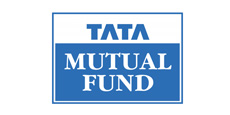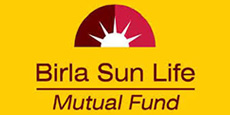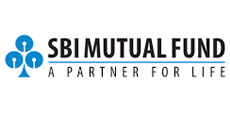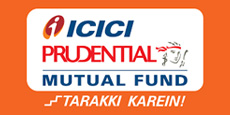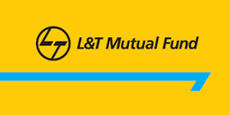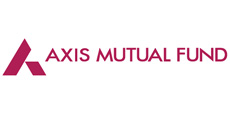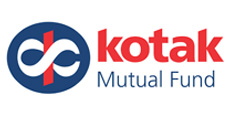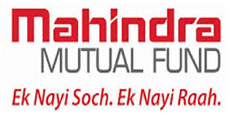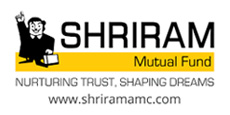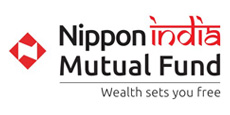A Mutual Fund (MF) is formed by collecting money from a number of investors who share a common investment objective. Then, it invests the money in equities, bonds, money market instruments and/or other securities. mutual funds are managed by a professional fund manager to earn the highest possible returns. The income/gains generated from this collective investment is distributed proportionately amongst the investors after deducting certain expenses.

Highlights
- Regulated by SEBI
- Managed by Professionals
- Money collected from many individuals/investors
- Higher returns than conventional investing
- Can be started with minimum amount
- Large portfolios to choose from
Types of Mutual Funds
All Mutual Funds would be broadly classified in the following schemes:
Sr. No.
Category of Schemes
Scheme Characteristics
Type of scheme
1
Multi Cap Fund
Minimum investment in equity & equity related instruments - 65% of total assets
Multi Cap Fund- An open ended equity scheme investing across large cap, mid cap, small cap stocks
2
Large Cap Fund
Minimum investment in equity & equity related instruments of large cap companies - 80% of total assets
Large Cap Fund- An open ended equity scheme predominantly investing in large cap stocks
3
Large & Mid Cap Fund
Minimum investment in equity & equity related instruments of large cap companies- 35% of total assets
Minimum investment in equity & equity related instruments of mid cap stocks - 35% of total assets
Large & Mid Cap Fund- An open ended equity scheme investing in both large cap and mid cap stock
4
Mid Cap Fund
Minimum investment in equity & equity related instruments of mid cap companies - 65% of total assets
Mid Cap Fund - An open ended equity scheme predominantly investing in mid cap stocks
5
Small Cap Fund
Minimum investment in equity & equity related instruments of small cap companies - 65% of total assets
Small Cap Fund - An open ended equity scheme predominantly investing in small cap stocks
6
Dividend Yield Fund
Scheme should predominantly invest in dividend yielding stocks.
Minimum investment in equity- 65% of total assets
Minimum investment in equity- 65% of total assets
An open ended equity scheme predominantly investing in dividend yielding stocks
7
Value Fund
Scheme should follow a value investment strategy. Minimum investment in equity & equity
related instruments - 65% of total assets
An open ended equity scheme following a value investment strategy
Contra Fund
Scheme should follow a contrarian investment strategy. Minimum investment in equity & equity
related instruments - 65% of total assets
An open ended equity scheme following contrarian investment strategy
8
Focused Fund
A scheme focused on the number of stocks (maximum 30) Minimum investment in equity & equity
related instruments - 65% of total assets
An open ended equity scheme investing in maximum 30 stocks (mention where the scheme intends
to focus, viz., multi cap, large cap, mid cap, small cap)
9
Sectoral / Thematic
Minimum investment in equity & equity related instruments of a particular sector / particular theme - 80% of total assets
An open ended equity scheme investing in __ sector (mention the sector) / An open ended equity scheme
following __ theme (mention the theme)
10
ELSS
Minimum investment in equity & equity related instruments - 80% of total assets (in accordance with
Equity Linked Saving Scheme, 2005 notified by Ministry of Finance)
An open ended equity linked saving scheme with a statutory lock in of 3 years and tax benefit
Sr. No.
Category of Schemes
Scheme Characteristics
Type of scheme
1
Overnight Fund
Investment in overnight securities having maturity of 1 day
An open ended debt scheme investing in overnight securities
2
Liquid Fund
Investment in Debt and money market securities with maturity of upto 91 days only
An open ended liquid scheme
3
Ultra Short Duration Fund
Investment in Debt & Money Market instruments such that the Macaulay duration of the portfolio is between 3 months - 6 months
An open ended ultra-short term debt scheme investing in instruments with Macaulay duration between 3 months and 6 months.
4
Low Duration Fund
Investment in Debt & Money Market instruments such that the Macaulay duration of the portfolio is between 6 months - 12 months
An open ended low duration debt scheme investing in instruments with Macaulay duration between 6 months and 12 months
5
Money Market Fund
Investment in Money Market instruments having maturity upto 1 year
An open ended debt scheme investing in money market instruments
6
Short Duration Fund
Investment in Debt & Money Market instruments such that the Macaulay duration of the portfolio is between 1 year - 3 years
An open ended short term debt scheme investing in instruments with Macaulay duration between 1 year and 3 years
7
Medium Duration Fund
Investment in Debt & Money Market instruments such that the Macaulay duration of the portfolio is between 3 years - 4 years
An open ended medium term debt scheme investing in instruments with Macaulay duration between 3 years and 4 years
8
Medium to Long Duration Fund
Investment in Debt & Money Market instruments such that the Macaulay duration of the portfolio is between 4 - 7 years
An open ended medium term debt scheme investing in instruments with Macaulay duration between 4 years and 7 years
9
Long Duration Fund
Investment in Debt & Money Market Instruments such that the Macaulay duration of the portfolio is greater than 7 years
An open ended debt scheme investing in instruments with Macaulay duration greater than 7 years
10
Dynamic Bond
Investment across duration
An open ended dynamic debt scheme investing across duration
11
Corporate Bond Fund
Minimum investment in corporate bonds - 80% of total assets (only in highest rated instruments)
An open ended debt scheme predominantly investing in highest rated corporate bonds
12
Credit Risk Fund
Minimum investment in corporate bonds - 65% of total assets (investment in below highest rated instruments)
An open ended debt scheme investing in below highest rated corporate bonds
13
Banking and PSU Fund
Minimum investment in Debt instruments of banks, Public Sector Undertakings, Public Financial Institutions - 80% of total assets
An open ended debt scheme predominantly investing in Debt instruments of banks, Public Sector Undertakings, Public Financial Institutions
14
Gilt Fund
Minimum investment in Gsecs - 80% of total assets (across maturity)
An open ended debt scheme investing in government securities across maturity
15
Gilt Fund with 10 year constant duration
Minimum investment in Gsecs- 80% of total assets such that the Macaulay duration of the portfolio is equal to 10 years
An open ended debt scheme investing in government securities having a constant maturity of 10 years
16
Floater Fund
Minimum investment in floating rate instruments - 65% of total assets
An open ended debt scheme predominantly investing in floating rate instruments
Sr. No.
Category of Schemes
Scheme Characteristics
Type of scheme
1
Conservative Hybrid Fund
Investment in equity & equity related instruments - between 10% and 25% of total assets;
Investment in Debt instruments - between 75% and 90% of total assets
An open ended hybrid scheme investing predominantly in debt instruments
2
Balanced Hybrid Fund
Equity & Equity related instruments - between 40% and 60% of total assets; Debt instruments -
between 40% and 60% of total assets No Arbitrage would be permitted in this scheme
An open ended balanced scheme investing in equity and debt instruments
Aggressive Hybrid Fund
Equity & Equity related instruments - between 65% and 80% of total assets; Debt instruments -
between 20% 35% of total assets
An open ended balanced scheme investing in equity and debt instruments
3
Dynamic Asset Allocation or Balanced Advantage
Investment in equity / debt that is managed dynamically
An open ended dynamic asset allocation fund
4
Multi Asset Allocation
Invests in at least three asset classes with a minimum allocation of
at least 10% each in all three asset classes
An open ended scheme
5
Arbitrage Fund
Scheme following arbitrage strategy. Minimum investment in equity &
equity related instruments - 65% of total assets
An open ended scheme investing in arbitrage opportunities
6
Equity Savings
Minimum investment in equity & equity related instruments - 65% of total assets and minimum investment in
debt - 10% of total assets Minimum hedged & unhedged to be stated in the SID. Asset Allocation under
defensive considerations may also be stated in the Offer Document
An open ended scheme investing in equity, arbitrage and debt
Sr. No.
Category of Schemes
Scheme Characteristics
Type of scheme
1
Retirement Fund
Scheme having a lock-in for at least 5 years or till retirement age whichever is earlier
An open ended retirement solution oriented scheme having a lock-in of 5 years or till retirement age (whichever is earlier)
2
Children's Fund
Scheme having a lock-in for at least 5 years or till the child attains age of majority whichever is earlier
An open ended fund for investment for children having a lock-in for at least 5 years or till the child attains age of majority (whichever is earlier)
Sr. No.
Category of Schemes
Scheme Characteristics
Type of scheme
1
Index Funds / ETFs
Minimum investment in securities of a particular index (which is being replicated / tracked) - 95% of total assets
An open ended scheme replicating / tracking index
2
FoFs (Overseas / Domestic)
Minimum investment in the underlying fund - 95% of total assets
An open ended fund of fund scheme investing in the fund
